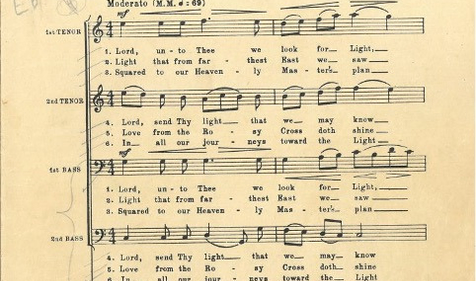In modern Scottish Rite Freemasonry, the 17th degree dramatizes a picture of human failure, and social and moral behavior.
In 32° Scottish Rite Freemasonry, we expand upon the Blue Lodge's fundamental principles and moral lessons to explore Masonic teachings more deeply and discover knowledge not found in the first three degrees. For over 200 years, our Brotherhood has worked to expand Masons' connection to the Craft while helping them become the best version of themselves. While every degree has essential Masonic philosophies to unlock, the two within the Chapter of Rose Croix, the 17° and 18°, own a special place in the Scottish Rite.
Freemasons are, as a rule, spiritual men. After all, professing one's faith in God is one of the fundamental prerequisites for becoming a Mason. The allegories and lessons relayed through our degrees strengthen that relationship with the Supreme Architect, and for many Brothers, it's a precious part of being a member. Often referred to as the spiritual center of Freemasonry, it is no surprise that the Rose Croix degrees often stand out to Scottish Rite Masons as two of the most cherished degrees.
The first degree in the Chapter of Rose Croix is the 17°, called Knight of the East and West. Scottish Rite Masons revisit this degree many times, constantly dissecting new insights from its themes of philosophy, religion, ethics, and more. It is distinct from the lessons of the Blue Lodge and the preceding Scottish Rite degrees, allowing members to enjoy new progress in their Masonic study. To understand how this and the subsequent 18° came to hold this unique place in Masonry, let us briefly examine the forming of the Chapter of Rose Croix.
The Chapter of Rose Croix
Like all of Freemasonry, the Scottish Rite has been an ever-changing body of men, traditions, and degrees since its inception in the early 19th century. The first Chapter of Rose Croix in North America was established in New York City in 1797 by a group that included influential Scottish Rite Mason J. J. J. Gourgas.
There is some debate about precisely when the Chapter of Rose Croix was integrated with the Scottish Rite. What is known is that in 1813, the Rose Croix Chapter, along with other Masonic groups, requested that the Charleston Supreme Council determine the legitimacy of these groups. This effectively caused a schism in the Scottish Rite and led to the creation of the Northern Masonic Jurisdiction by Sampson Simpson, Daniel D. Tompkins, Richard Riker, Gourgas, and other influential Masons.
The 17° & the Use of Biblical Symbols
While both degrees in the Chapter of Rose Croix wield Christian symbols, figures, and settings, their spiritual messages are universal for all Masons. The use of biblical motifs reflects Freemasonry's history, which began in Europe when Catholics and Protestants both sought the benefits of membership. The first Grand Lodge waived denominational restrictions so that all could join, but the belief in one God became an essential requirement for joining.
Despite this practice of universality, much of Masonry's enduring ritual extends from those created by our European ancestors in the 18th century. At the time, most Brethren were Christians and drew upon their knowledge of the bible to make the degrees and underlying themes of morality. In fact, "Rose Croix" translates to "rose cross" and is derivative of the symbol of the order of the Rosicrucians: a rose on a cross.
Today, our fraternity has grown and spread across the globe, and men of all faiths are welcome to join. The Christian motifs in degrees such as the 17° are vehicles for relaying spiritual and moral lessons and can be appreciated by all Masons, for we are united in the belief of a Supreme Being.
The Knight of the East and West
Like many Masonic bodies across the globe, the specific details and structure of degrees vary from place to place. In the Northern Masonic Jurisdiction, the 17° tells of a wanderer seeking truth. The ritual uses The Book of Life to depict a tale of human failure and teaches us that loyalty to God is man's primary allegiance. We realize that we should learn from the errors of the past lest we be doomed to repeat them. Doing so requires that we embrace our Core Values of Reverence for God and Service to Humanity.
Like all Masonic rituals, fully digesting the meaning and significance of the 17° requires years of study. While our diversity of faiths makes our Brotherhood stronger, our belief in God is what allows the lessons of the 17° to resonate with us. As Freemasons, we use our study of ritual to understand our places in the plan of the Grand Architect. The philosophies at the core of the Chapter of Rose Croix are vital stops on our journey, worthy of revisiting.
For further reading, explore these articles from the Scottish Rite, NMJ:
Related Stories
Discover additional Scottish Rite blogs and news on this topic.



